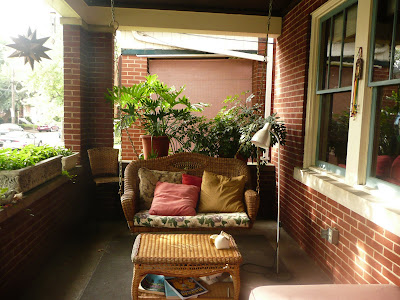Writing the Shadow:
the Persona and Dramatic Monologue Poem
I. Some Definitions:
Persona (from Merriam Webster)
1 : a character assumed by an author in a written work
2 a plural personas [New Latin, from Latin] : an individual's social facade or front that especially in the analytic psychology of C. G. Jung reflects the role in life the individual is playing
b : the personality that a person (as an actor or politician) projects in public (image).
--A single person, who is patently not the poet, utters the speech that makes up the whole of the poem, in a specific situation at a critical moment […].
--This person addresses and interacts with one or more other people; but we know of the auditors' presence, and what they say and do, only from clues in the discourse of the single speaker.
--The main principle controlling the poet's choice and formulation of what the lyric speaker says is to reveal to the reader, in a way that enhances its interest, the speaker's temperament and character.
Shadow
a. “The shadow is that part of us we fail to see or know. “ Owning Your Own Shadow: Understanding the Dark Side of the Psyche, Robert Johnson
b. The shadow is “the personification of certain aspects of the unconscious personality… which…is the dark, unlived, and repressed side of the ego complex. ” Shadow and Evil in Fairytales, Marie-Louise Von Franz.
II. Exploring your Shadow
What is the nature of the face you project to the world? What do you have to repress or hide in order to keep that face alive? Imagine you are Dr. Jekyl and Mr. Hyde. What would your Mr. Hyde be like? In the tale of Jekyl and Hyde, Jekyl was a doctor who saved live, and Hyde was a murderer who took lives. One could argue Hyde was Jekyl’s shadow. What might your shadow be? Write a draft of a poem that is written in the voice of your shadow. Do not use the word shadow and do not refer to yourself. This poem is writtenonly in the voice of the shadow. Give it a title at the end that makes it a person outside of yourself (see, for examples of titles, Ai and Christopher Davis persona poems).
See this poem by Ai for an idea of how to work place and other specific details into a shadow poem such that the character is brought alive:
The Hitchhiker (from Vice: New and Selected Poems, NY: Norton, 1999)
The Arizona wind dries out my nostrils
and the head of the sidewalk burns my shoes,
as a woman drives up slowly.
I get in, grinning at a face I do not like,
but I slide my arm across the top of the seat
and rest it lightly against her shoulder.
We turn off into the desert,
then I reach inside my pocket and touch the switchblade.
We stop, and as she moves closer to me, my hands ache,
but somehow, I get the blade into her chest.
I think a song: “Everybody needs somebody,
everybody needs somebody to love,”
as the black numerals 35 roll our of her right eye
inside one small tear.
Laughing, I snap my fingers. Rape, murder, I got you
in the sight of my gun.
My feet press down in it,
familiar with the hot, soft asphalt
that caresses them.
The sun slips down into its cradle behind the mountains
and it is hot, hotter than ever
and I like it.



























